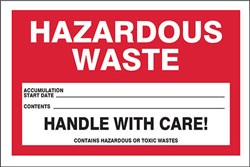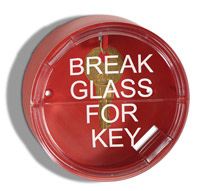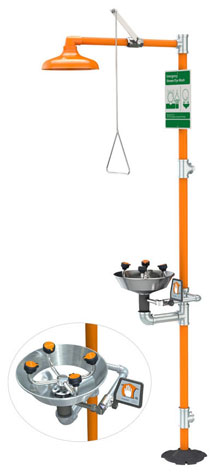| The Home page of ILPI's Safety Data Sheet (SDS) Resource, the leader in SDS information since 1995! | |
| The history and philosophy behind this resource. | |
| A curated collection of books and reference materials concerning Safety Data Sheets and closely related topics. | |
| Paste your plain text SDS into the SDS-Demystifier, and it will be converted into a hypertext-enriched document with links to detailed explanations of each key term. | |
| An extensive list of frequently asked questions about Safety Data Sheets including regulations, content, compliance, and more. | |
| A humorous take on Safety Data Sheet jargon. Fill in the blanks on our entry form to generate a personalized Unsafety Data Sheet to share with your coworkers. | |
| Since 1995, we've maintained this massive curated list of the best places to find Safety Data Sheets on the Internet. | |
| You are here! Way more than a glossary, this hypertext-enhanced resource covers hundreds of SDS-related terms and expert knowledge. Each entry includes both the SDS relevance and links to additional authoritative resources. | |
| Archived results of Safety Data Sheet related polls taken by some of our millions of site visitors | |
| The OSHA regulations behind SDS regulations, including the inspection guidelines and over 400 official interpretations letters under the Hazard Communication Standard | |
| Commercial suppliers of SDS authoring and management software as well as cloud compliance services. | |
| Commercial companies that will create SDS's for your specific needs as well as SDS translation companies. |

Safety signs, banners, and scoreboards? Get yours at Safety Emporium!

Get your hazardous waste labels from Safety Emporium.
Definition
The U.S. Emergency Planning and Community Right-To-Know Act (EPCRA) also known as the Community Right-To-Know Act or SARA, Title III provides for the collection and public release of information about the presence and release of hazardous or toxic chemicals in the nation's communities.
The law requires industries to participate in emergency planning and to notify their communities of the existence of, and routine and accidental releases of, hazardous chemicals. The goal is to help citizens, officials, and community leaders to be better informed about toxic and hazardous materials in their communities.
Additional Info
To implement EPCRA, Congress required each state to appoint a State Emergency Response Commission (SERC). The SERC's were required to divide their states into Emergency Planning Districts and to name a Local Emergency Planning Committee (LEPC) for each district.
Broad representation by fire fighters, health officials, government and media representatives, community groups, industrial facilities, and emergency managers ensures that all necessary elements of the planning process are represented. If you have a major chemical user or manufacturer in your community, plans to deal with emergency releases have already been developed. Consult your local or regional EPA office for more information.
You can what it's like to participate in an LPEC in several posts on the DCHAS-L discussion list. The time commitments are rather small and it can be very rewarding in both a personal and professional capacity.
A list of over 600 chemicals subject to EPCRA are listed in the Toxics Release Inventory (TRI), which is maintained by the U.S. Environmental Protection Agency (EPA).
Key Provisions of EPRCRA
EPCRA's key provisions are referred to by their Section in Subchapter J of Title 40 of the Federal Code:

Get your Break glass keyboxes and other emergency accessories from Safety Emporium.
- Sections 301 to 303: Emergency planning. Local governments are required to prepare chemical emergency response plans, and to review plans at least annually. State governments are required to oversee and coordinate local planning efforts. Facilities that maintain Extremely Hazardous Substances (EHS) on-site in quantities greater than corresponding threshold planning quantities (TPQs) must cooperate in emergency plan preparation. The current EHS list is maintained in Appendices A and B to Part 355.
- Section 304: Emergency Notification. Facilities must immediately report accidental releases of EHSs and "hazardous substances" defined under the Comprehensive Environmental Response, Compensation, and Liability Act (CERCLA). Any releases of these substances in quantities greater than their corresponding Reportable Quantities (RQs) must be reported to state and local officials.
- Sections 311 and 312: Community Right-to-Know Requirements. Facilities handling or storing any hazardous chemicals must submit Safety Data Sheets to state and local officials and local fire departments. Hazardous chemical are defined under OSHA regulations such as HCS 2012. Facilities must also submit an inventory form of these chemicals to state and local officials and local fire departments. Facilities were originally required to provide either a Tier I or Tier II form. The Tier II form is more comprehensive and currently all states require Tier II forms instead of Tier I. Tier II forms contain basic facility identification information, employee contact information, information about chemicals stored or used at the facility, and additional data elements which could be useful to local planners and responders.
- Section 313: Toxics Release Inventory (TRI). Facilities must complete and submit a toxic chemical release inventory form (Form R) annually. Form R must be submitted for each of the over 600 TRI chemicals that are manufactured or otherwise used above the applicable threshold quantities.
- Section 322: Trade secrets. Facilities are allowed to withhold the specific chemical identity from the reports filed under sections 303, 311, 312 and 313 of EPCRA if the facilities can substantiate a genuine trade secret designation.

Safety Emporium carries all kinds of eye/face washes, safety showers, drench hoses and more.
Books Available
NOTE: We may collect a share of sales or other compensation from the links in the following list:
- "Emergency Planning and Community Right-to-Know Act (EPCRA) Overview and Purpose", paperback, 194 pages, 2013. Estimated price $23.75. Info and/or order.
- "Emergency Planning and Community Right-to-Know Act (EPCRA) of 1986: as amended through P.L. 15-270, enacted October 23, 2018 ", paperback, 39 pages, 2019. Estimated price $11.99. Info and/or order.
SDS Relevance
On June 13, 2016, the US EPA published a final rule, Hazardous Chemical Reporting: Community Right-to- Know; Revisions to Hazard Categories and Minor Corrections (see FR 81 FR 38104), adopting the physical and health hazards from OSHA's HCS 2012. The preamble of the rule states that facilities should use the new physical and health hazards on their emergency and hazardous chemical inventory form (also known as the "Tier II reporting form") for chemicals present at their facility starting with 2017 calendar year.
EPCRA or TRI information is not the same as an SDS, but SDS's are part of the required data. EPCRA and TRI data not only includes SDS's on specific TRI substances, but also provides useful information for people concerned about the presence (or potential presence) of chemicals in their community or environment. You can search the TRI inventory in your area with a number of tools available from the EPA web site.
Further Reading
- Emergency Planning and Community Right-to-Know Act (EPCRA) home page at the US EPA.
- What is EPCRA? at the US EPA.
- EPCRA Regional Contacts at the US EPA.
- The US EPA has a software suite CAMEO used widely to plan for and respond to chemical emergencies. The CAMEO system integrates a chemical database and a method to manage the data, an air dispersion model, and a mapping capability You can learn more about CAMEO, try the on-line version, or download it for Mac or Windows format.
- EPCRA overview at the Healthcare Environmental Resource Center.
- See CFR 42, Chapter 116 for the full text of the U.S. regulations establishing EPCRA.
See also: SARA, Toxics Release Inventory.